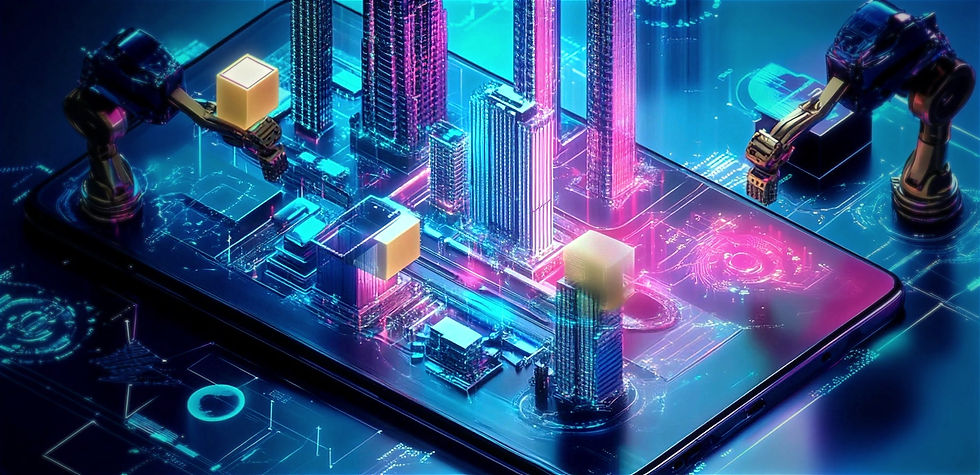
In an era where technology is advancing rapidly, the business of Immersive Interactive Experience (IIX) has become an exciting approach to creating meaningful and memorable experiences for users, whether in the form of VR (Virtual Reality), AR (Augmented Reality), or 3D experiences. This business focuses on capturing attention and fostering a higher level of user engagement.
We prioritize the innovation of unique techniques and content while seeking experienced individuals to present diverse and creative artistic works. Together, we aim to develop and showcase projects that not only capture the eye but also evoke feelings and provide varied experiences for participants.

DIGITAL TWIN
A digital twin is a digital model that simulates or reflects the operation of objects or systems in the real world, such as machinery, buildings, or production systems. It uses data from sensors and other sources to create an accurate and up-to-date representation of what is happening in the real world.The use of digital twins offers many benefits in various areas, such as data analysis, problem prediction, performance optimization, and timely maintenance. Additionally, it can be used for design and testing before implementation, significantly reducing costs and development time.
The use of digital twins in exhibitions has several benefits, including:
1. Experience Simulation: It allows for the creation of 3D models of products or services, enabling attendees to explore and interact in detail without needing the actual product on-site.
2. Data Analysis: It helps collect data on attendance, interactions, and visitor behavior to analyze and improve future events.
3. Improved Communication: Digital twins can be used to present information or demonstrations in a clearer and more engaging manner, increasing attendee participation.
4. Cost Reduction: It lowers transportation and installation costs for actual products, especially when participating in multiple exhibitions.
5. Training: It can be used for training employees or teams on new products or services through simulated scenarios in a digital environment.
6. Data Connectivity: It can connect with real-time data, such as monitoring the performance of products or services, ensuring attendees receive up-to-date and accurate information.
Therefore, using digital twins in exhibitions not only enhances the experience for attendees but also allows organizers to improve their strategies and operations more effectively.
